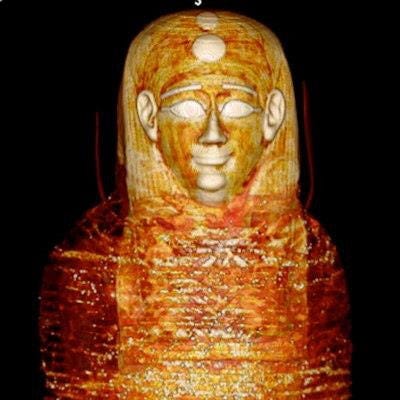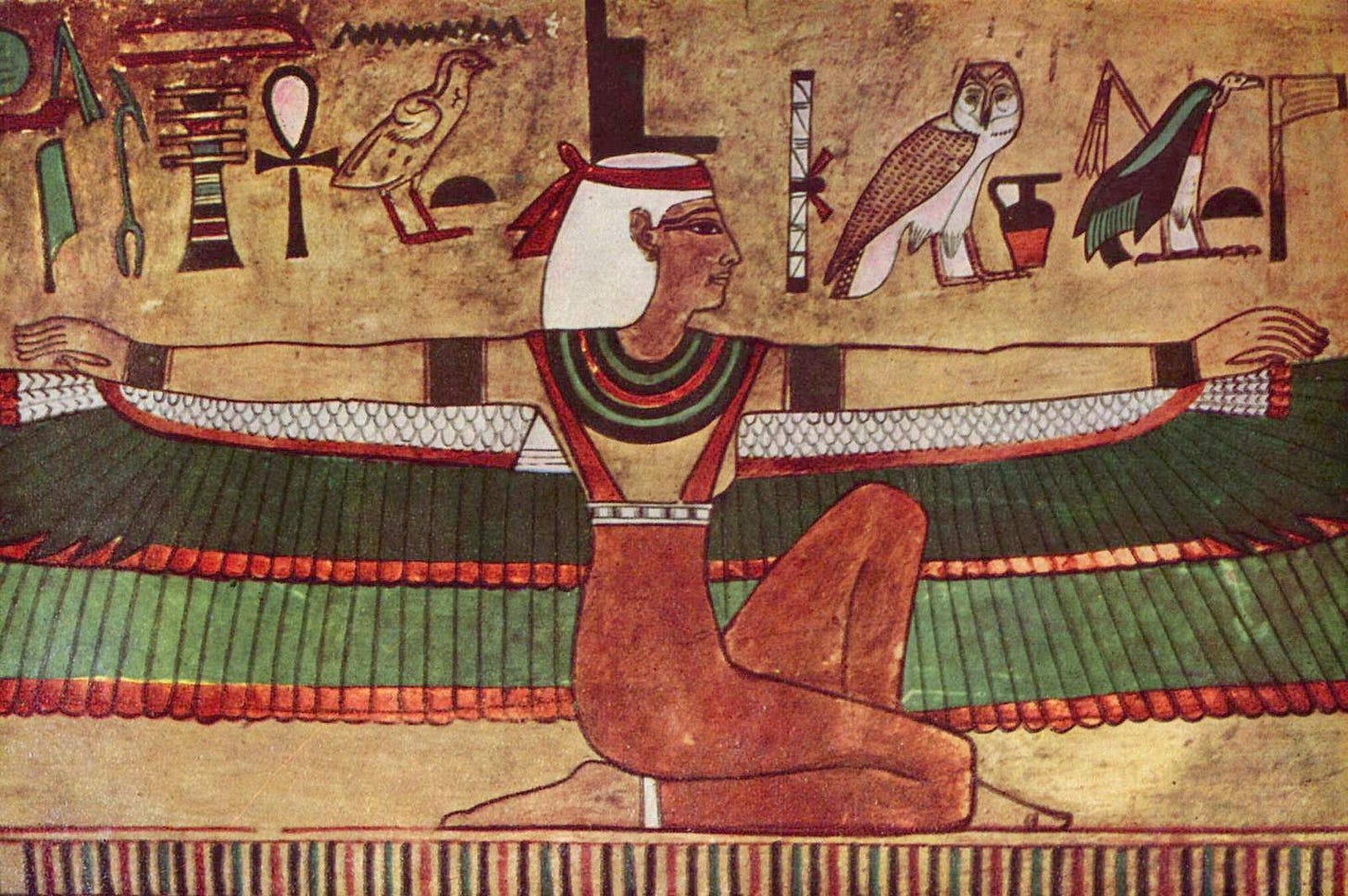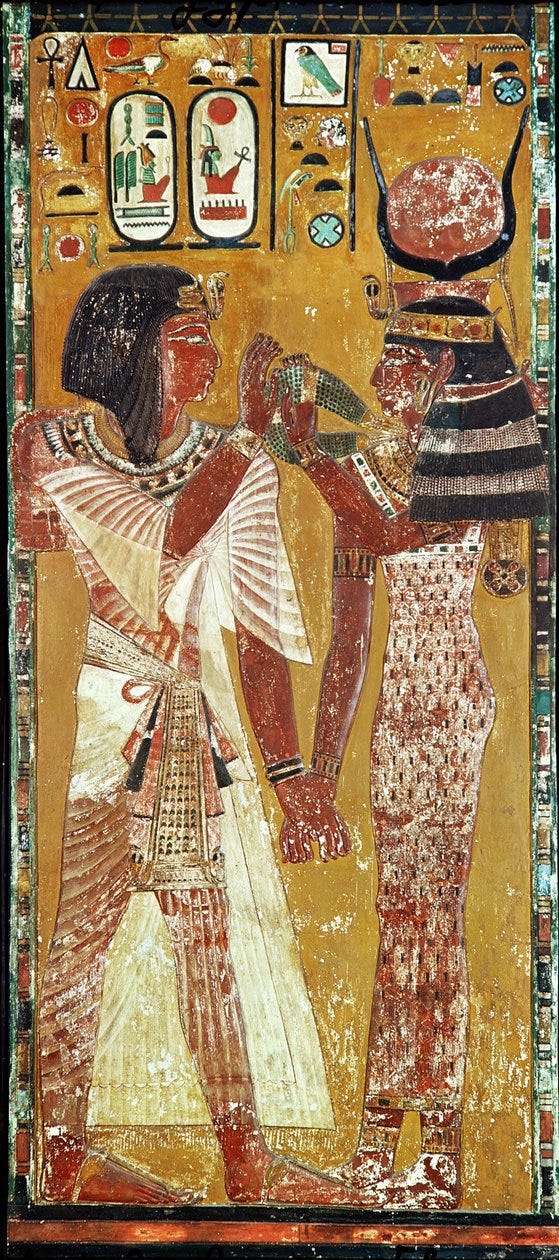All images courtesy of Dr. Sahar Saleem.
The ‘Golden Boy’ was discovered way back in 1916 in a place called Nag el-Hassay, a southern Egyptian cemetery dating from the Ptolemaic period (332-30 BCE). Interest in this long-forgotten artefact has recently been reignited by advanced CT scans that have revealed a wealth of new insights into the ancient burial practices and beliefs at the time of his demise. The mummy had been resting unexamined in the basement of the Egyptian Museum in Cairo for over a century until this recent study. Researchers have uncovered the secrets of this teenage boy's final journey, which was preserved for 2,300 years using innovative digital unwrapping techniques.
Nicknamed "Golden Boy" due to the 49 protective amulets found within his wrappings and on his body, he represents ancient Egyptians’ elaborate preparations for the afterlife. Among these amulets are powerful symbols: a golden tongue in his mouth, believed to enable speech after death, and a heart-shaped scarab in his chest, which, according to the Egyptian "Book of the Dead," would silence the heart on Judgment Day to avoid self-incrimination. This scarab was crafted from gold and inscribed with spells to protect the young boy’s spirit in the underworld, and its purpose was so significant that researchers have even 3D-printed a replica to study it further.
Golden Boy was also dressed to walk into eternity. His mummified body included a gilded head mask, cartonnage across his torso, and sandals—likely intended to allow him to step out of his tomb, clean and ready for the afterlife. Around him, dried ferns were placed, a practice reminiscent of plant offerings found with royal mummies like that of Ramesses the Great. The amulets, in 21 unique shapes, were positioned strategically, reflecting Egyptian spiritual values: they included symbols of protection, renewal, and harmony, such as the Eye of Horus and the Knot of Isis, believed to channel the goddess’s protective power.
The number of amulets 49 is also significant, being a multiple of seven and the sacred number of the goddesses Isis in the pantheon of Heliopolis and Hathor, the goddess of the seventh nome of Upper Egypt. Both goddesses were connected with re-birth into the afterlife. Isis resurrected her dead husband, Osiris so that she could impregnate herself and continue his royal line. Hathor was not a saviour in the same way as Isis. Instead, she was a sustainer and protective guardian of the dead. The 21 different shapes also add to the sacred imagery and power of the amulets representing many times (3 was the number representing many) and seven (the number of the goddesses Isis and Hathor). Gold, of course, was the metal of immortality because it was the material of the gods.
"[The amulets were] beautifully stylized in a unique arrangement of three columns between the folds of the wrappings and inside the mummy's body cavity," Saleem said in the journal statement. "These include the Eye of Horus, the scarab, the akhet amulet of the horizon, the placenta, the Knot of Isis, and others." Dr. Sahar Saleem, Professor of Radiology at Cairo University.1
The wealth of burial goods and meticulous mummification suggest that Golden Boy came from a high-status family who spared no expense in his journey to the next world. His remains are now part of a main exhibition at the Egyptian Museum, accompanied by his CT images and a replica of the heart scarab. This allows modern visitors a glimpse into the ancient Egyptians’ profound belief in the afterlife and the intricate rituals designed to ensure safe passage.
Isis, goddess number seven in the pantheon of Heliopolis.
Relief depicting the Goddess Hathor placing the magic collar on Seti I (c.1394-1279 BC) New Kingdom (painted limestone)
In January 2023, radiologists at Cairo University used CT scans to non-invasively examine the mummy, revealing many details about the boy's life:
The boy was estimated to be 14–15 years old when he died.
The boy's viscera were removed through an incision, except for the heart.
The boy's brain was removed through the nose and replaced with resin.
This discovery not only underscores the Egyptians’ commitment to preparing for the afterlife but also reveals a sophisticated, symbolic language through which they expressed their most cherished beliefs about life, death, and eternity.
https://www.auntminnieeurope.com/clinical-news/article/15657499/ct-unlocks-secrets-of-golden-boy-mummy






